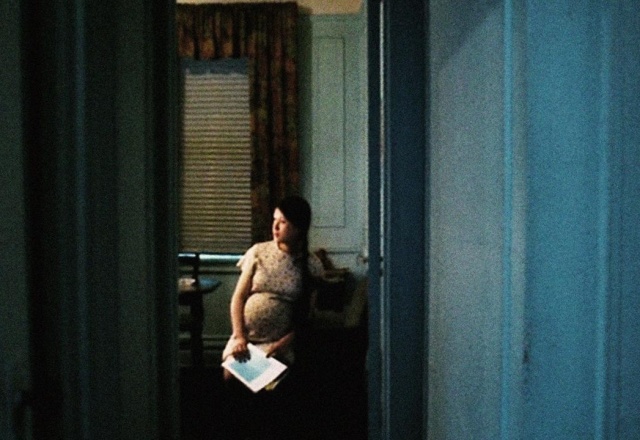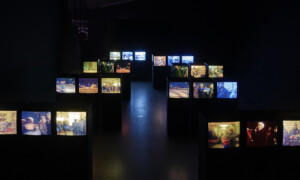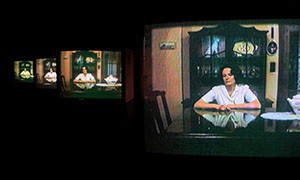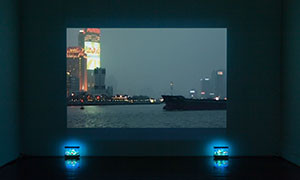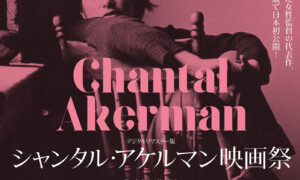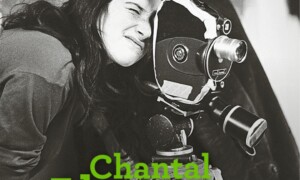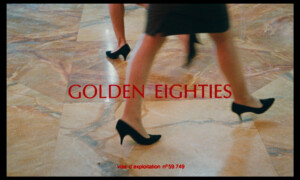exhibition 1 June through 30 August 2020
As a 25-year-old dropout from film academy, Chantal Akerman acquired instant fame in 1975 with Jeanne Dielman, 23, Quai du Commerce, 1080 Bruxelles. This understated, minimalist portrait of the mundane chores of a Brussels housewife and part-time prostitute was lauded as the standard bearer of feminist avant-garde cinema. In a stripped-down and anti-dramatic style – later referred to as ‘slow cinema’ – Akerman exposed the oppressive routine of a homemaker’s existence and gave a face to the secret life of countless women.
Akerman’s work is characterized by a detached approach to what looks like ‘ordinary life’, but where a profusion of violent events, memories and emotions lurk beneath the surface. Akerman, herself the child of an Auschwitz survivor, is “charging the mundane with significance”.
Around 1995 – by then Akerman was the celebrated director of classic films such as News from Home (1977), Toute une nuit (1982) and Nuit et jour (1991) – the filmmaker discovered a world outside movie theatres. Her first video installation was D’Est in 1995, in which she presented hypnotic images on 24 monitors to show how people try to survive behind the Iron Curtain in the countries of the former Eastern Bloc. Her observational images of people and landscapes lack any dialogue or narrative. This installation marked the start of a ‘second career’ within the world of visual art.
Much of Chantal Akerman’s pioneering work testifies to her avant-garde approach to the medium she employs. Features of her distinctive personal style are long shots, frontal camera positioning and wide frames, enabling her to put forward a new interpretation of time and space. Akerman’s works embody history, memories, lives that seem normal but are not. They display an “almost tactile sense of what it is like to observe from a respectful distance, the people and places they record”.

The exhibition features eight of Akerman’s film installations. In addition to D’Est, they include a.o. Woman Sitting after a Killing (2001), Tombée de nuit sur Shanghai (2007-2008) and her final work NOW (2015).
The international art world quickly recognized the remarkable quality of Akerman’s visual work. A series of exhibitions in renowned museums followed, including Walker Art Museum (1995), Jeu de Paume, Paris (1995), Documenta XI, Kassel (2002) and M HKA, Antwerp (2012). Akerman also took part in the Venice Biennale in 2001 and 2015.
Born in Brussels, Chantal Akerman died in Paris in 2015, one year after the death of her mother, an Auschwitz survivor with whom she had a difficult yet symbiotic relationship.
Publication Chantal Akerman – Passages
The exhibition is accompanied by a richly illustrated publication with texts by Chantal Akerman herself, supplemented with essays by Cyril Béghin, Dana Linssen and Roos van der Lint. This publication focuses on Chantal Akerman’s spatial works of art. Various authors discuss her highly personal oeuvre, which is characterized by a detached approach to seemingly “ordinary” lives and the use of time, as well as to migration, trauma and the roles of women. Akerman shows that beneath the surface of everyday life, there lies an arsenal of intense events, memories and emotions.
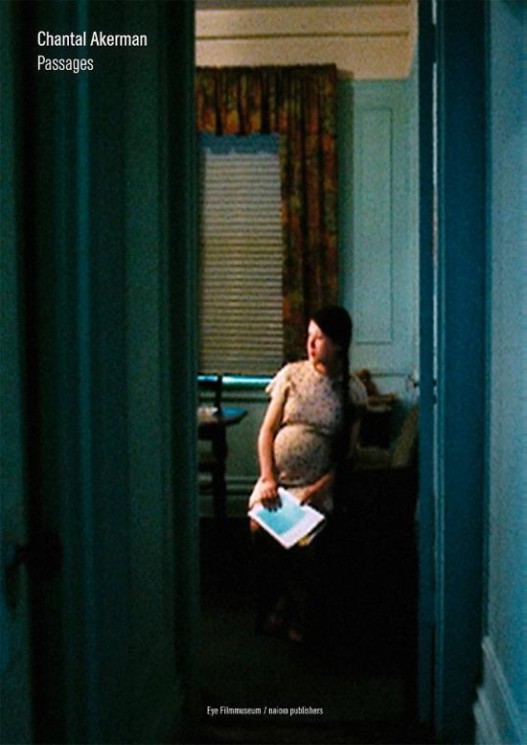
Chantal Akerman – Passages
Paperback, ISBN 9789462085503
Editing and composition: Jaap Guldemond and Marente Bloemheuvel.
Design: Joseph Plateau.
Edition of Eye Filmmuseum and nai010 publishers, Rotterdam.
Available from March 20, 2020, € 24.95
Cyril Béghin introduces the oeuvre and describes the historical tensions in the work, rooted in the personal family traumas from the Second World War and Akerman’s own way of being free from any kind of connectedness. Dana Linssen’s contribution consists of a philosophical essay about the concept of time in Akerman’s work and that of other filmmakers and artists. Finally, Roos van der Lint zooms in on the spatial installations.
